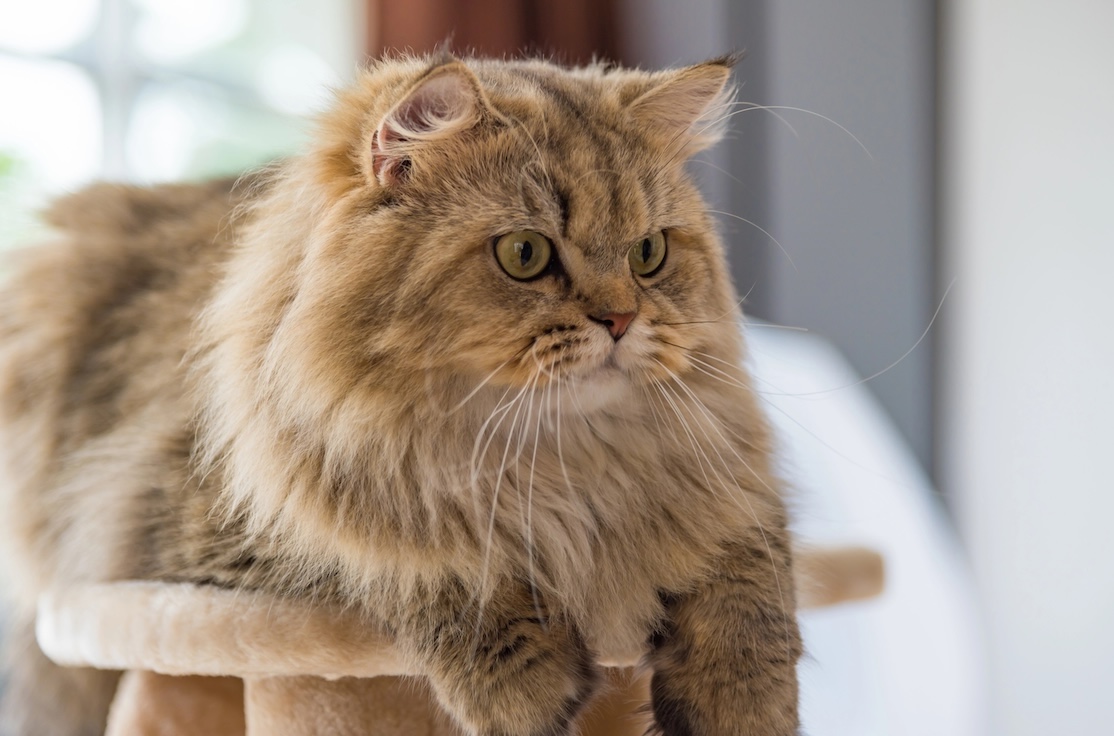A Primer On Hairballs In Cats
When it comes to hairballs in cats, there’s a lot of interest from cat parents. A hairball –also known as a trichobezoar if it ever comes up at trivia night – is an accumulation of ingested hair that forms in your cat’s stomach. Most commonly, these hairballs are then vomited up, and we then find them on our floors, rugs, or furniture. Hairballs are so common that it’s tempting to dismiss them as just a normal part of owning a cat, but there are underlying causes for hairballs in cats…many of which shouldn’t be ignored.
How Do I Recognize Hairballs In Cats?
Sometimes hairballs are clearly recognizable as such. Other times, they appear as a long tube of kibble. If you’ve got the stomach for it, try teasing the kibble apart and you’ll see that it’s held together with hair. You also may catch your cat in the act of retching and see the hairball be vomited up. In other cases, you may hear your cat hacking or gagging without production of any vomit: this can be a sign that a hairball is imminent or that a previous hairball has irritated the throat.
How Do Hairballs In Cats Form?
Self-grooming is a characteristic of a normal, healthy cat. As a cat licks its coat with its rough, brush-like tongue, loose hair is picked up and subsequently ingested. This hair travels down the esophagus and into the stomach. Compared to dogs, cats have few contractions of their stomach between meals (interdigestive contractions), and this allows hair to accumulate. When this mass of hair is then vomited out of the stomach and back up the esophagus, it’s compressed into a tubular shape.
Why Worry About Hairballs In Cats?
Apart from the mess, we care about hairballs because they may be associated with other medical problems.
For starters, recurrent vomiting puts your cat at risk for esophageal damage and upper airway irritation because the gastric contents are acidic. If a hairball forms and is not vomited up, it may lodge further downstream in the gastrointestinal tract leading to a blockage that could require surgery.
Your cat may be developing hairballs because he or she is excessively grooming his or her coat due to the presence of fleas or because of dermatitis caused by environmental allergens. In some cases, excessive grooming could be a behavioral problem due to stress.
Hairballs also may form more easily and frequently in cats who have reduced gastrointestinal movement (motility) due to inflammatory bowel disease (IBD). IBD is an autoimmune condition that can cause chronic, recurrent vomiting and/or diarrhea and weight loss. A specific form of IBD may develop in cats who have a sensitivity or allergy to certain components of their diet. Left unmanaged, chronic inflammation in the gut due to IBD can lead to the development of lymphoma, a type of cancer.
How Can Hairballs In Cats be Treated or, Better Yet, Prevented?
Here are 3 simple common sense approaches to treating or preventing hairballs in your cats:
Regular Grooming Sessions: Regular brushing will help remove loose hair and reduce the amount of fur your cat ingests while self-grooming.
Preventative Medication If Needed: Consistent use of effective preventive medication will eliminate excessive grooming caused by itchiness from fleas or other external parasites like lice and mites.
Smaller, More Frequent Meals: When you feed your cat smaller, more frequent meals, it helps stimulate more frequent stomach contractions so that hairballs have less opportunity to form. Canned food clears the stomach more rapidly than kibble, taking ingested hair along with it.
DID YOU KNOW:
If you feed your cat a dry diet, it’s been shown that ROUND kibble passes more quickly than angular/triangular-shaped kibble.
If your veterinarian diagnoses hairballs and other significant illnesses have been ruled out, he or she may discuss a transition to a hairball control diet. Frequently, a gel or paste-type lubricant like CatLax or Laxatone will be prescribed to help hair pass through the gastrointestinal tract more easily. Sometimes these products can simply be applied to the top of a paw, and your cat will self-medicate by licking the gel off.
What’s the First Action Item If Your Cat Has Hairballs?
If your cat has been hacking, gagging, or vomiting, please schedule an appointment so that we can help you and your pet. If hairballs are to blame, you don’t have to accept regular vomiting as “normal.” At Alford Avenue Veterinary Hospital, we’ve got the tools to complete a thorough workup, including digital X-ray, a state-of-the-art ultrasound machine, and a complete in-house laboratory. Every appointment starts with listening to your concerns and a thorough physical examination of your cat by one of our veterinarians. In this instance, the goal is to reduce hairballs and the vomiting that comes with it.
Contact Alford Avenue Veterinary Hospital if your cat has hairballs, and we’ll work to get your cat healthier and more comfortable.

